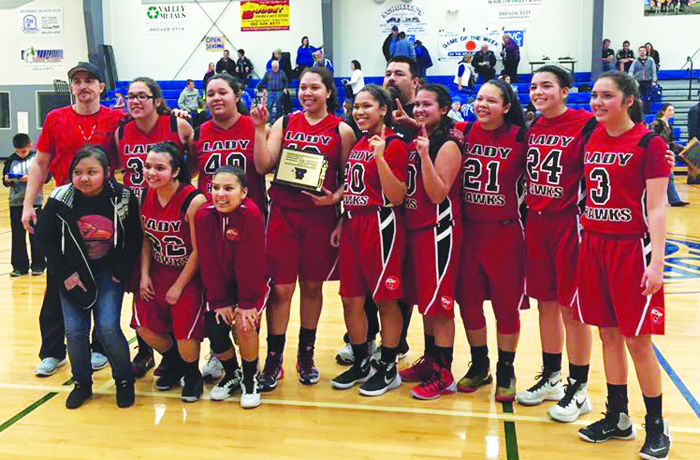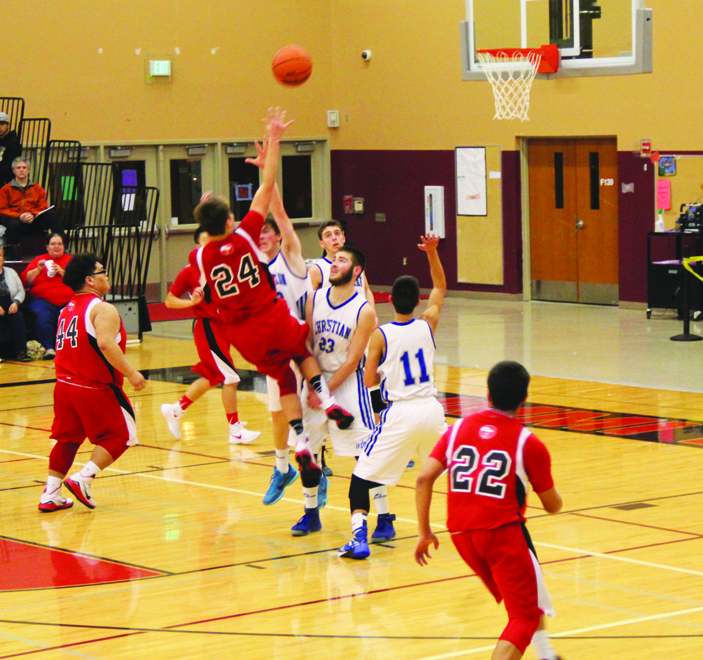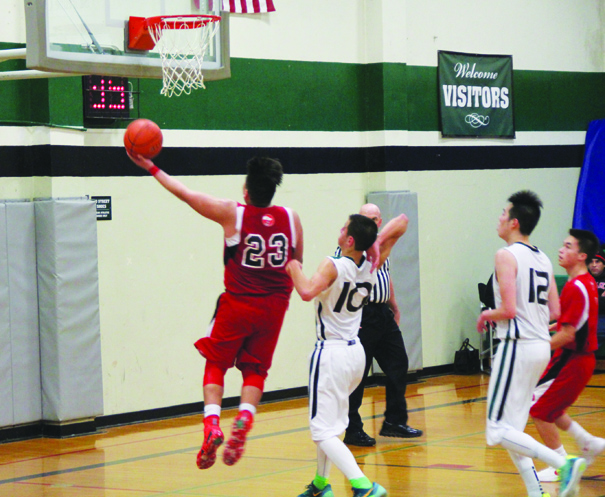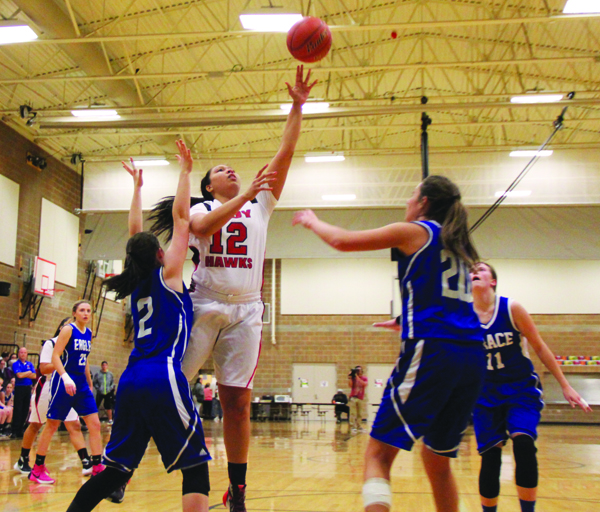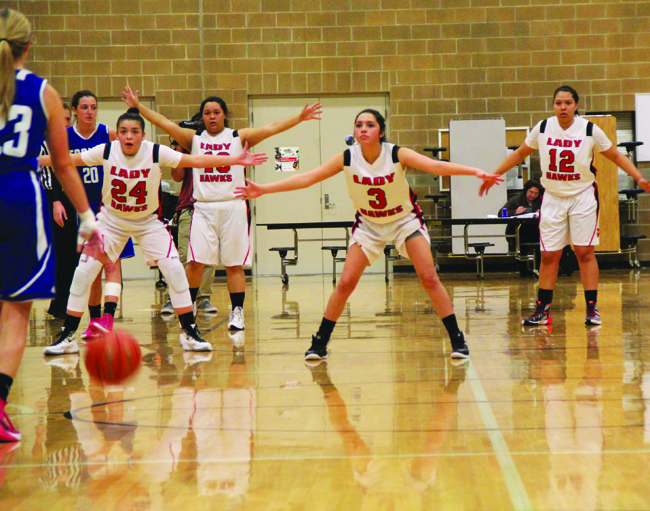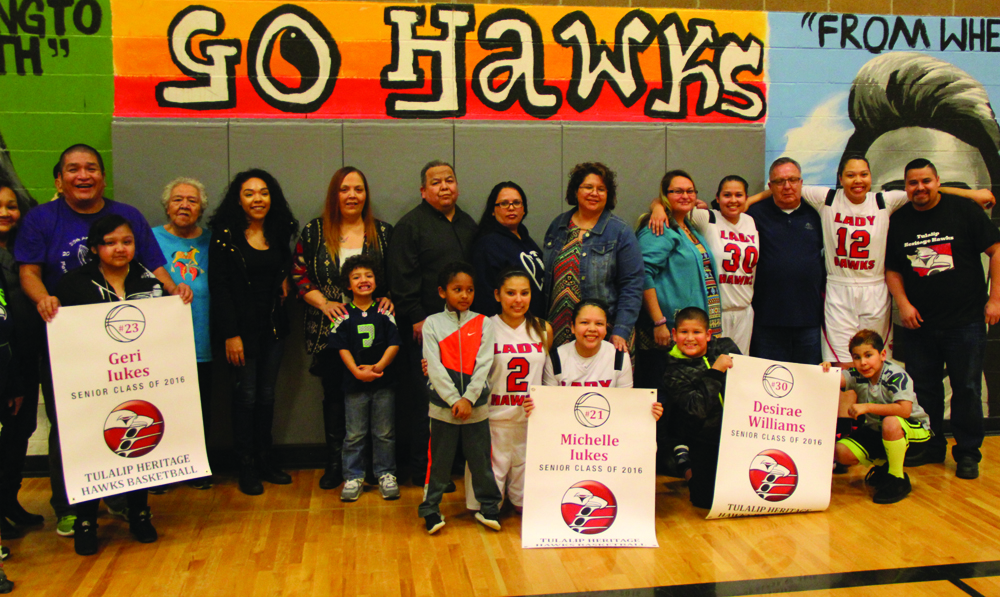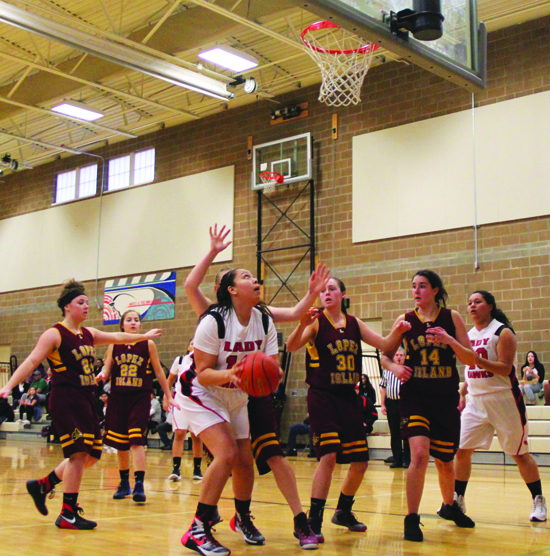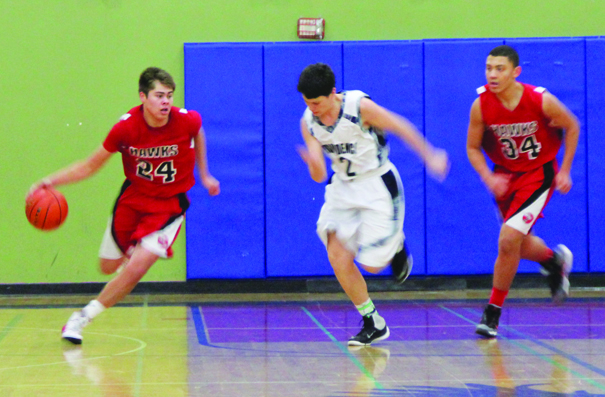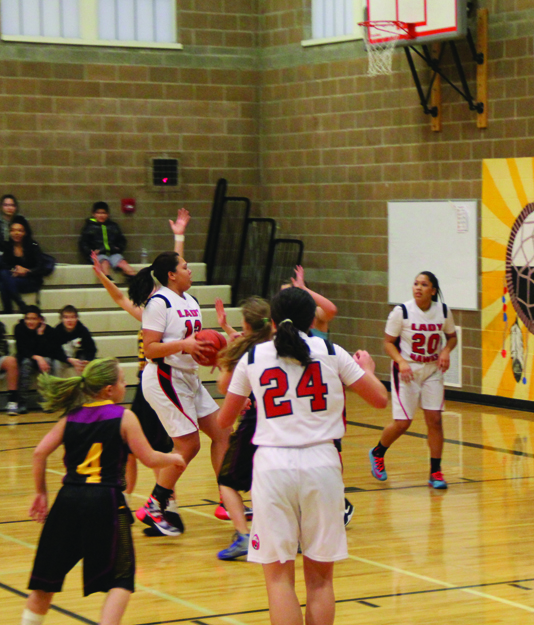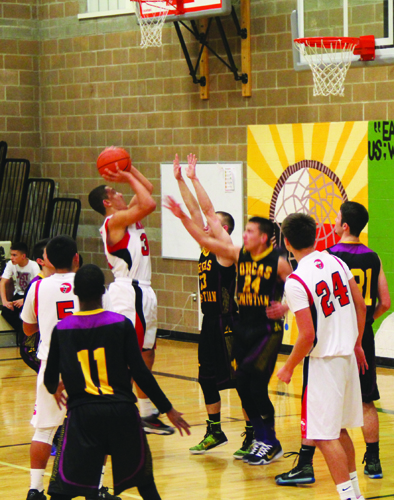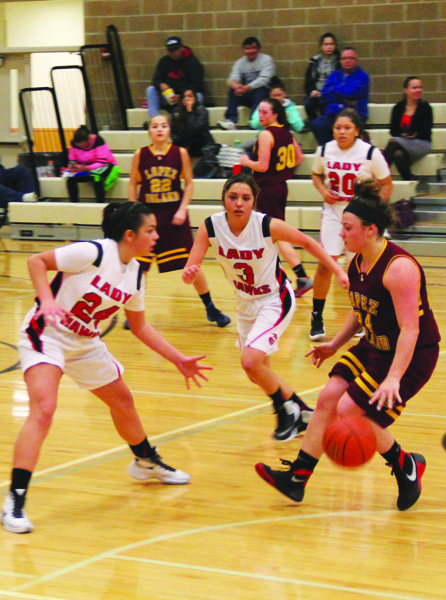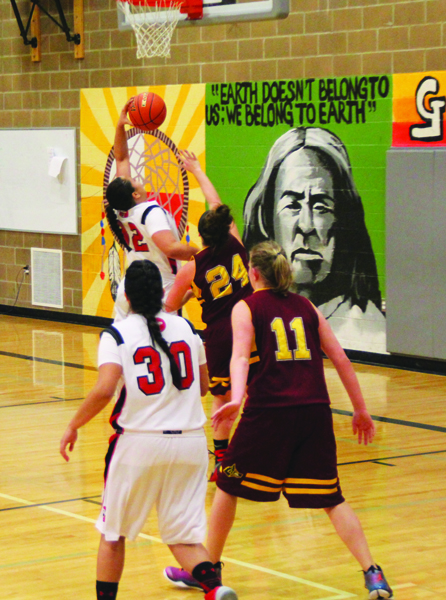By Micheal Rios, Tulalip News
The Tulalip Heritage Lady Hawks (19-0) finished the regular undefeated and earned the top seed in the District 1B girls basketball tournament. They traveled to Mt. Vernon Christian to take on the local Hurricanes (13-8) on Friday, February 5.
For the Lady Hawks, this would be their first game against stiffer competition. During the regular season the Lady Hawks completely destroyed team after team within their league. In fact, they averaged 61 points on offense while holding their opponents to only 29 points, giving the Lady Hawks an average margin of victory a whopping 32 points. That’s a very impressive margin for any team, but now that the District and Tri-District tournaments are here, they bring much better teams and a level of competition we haven’t seen all season.
In the 1st half, it was just as expected in terms of increased competition. The Hurricanes gave the Lady Hawks everything they could handle and then some. The Lady Hawks, not used to be being pressed, struggled to get the ball up court at times. To adjust, coach Fryberg had Adiya run point and bring the ball up herself. That worked as she was able to dribble through the Hurricanes defense and initiated the offense. Adiya scored 9 points in the half and assisted on both baskets scored by Cyena and Desirae.
On defense, the Lady Hawks seemed to be a step behind the Hurricanes and were called on a lot of passes for blocking or contact. This put Aliya, Cyena, and Adiya all in foul trouble in the early going, which further hindered their routinely potent offense. At half time the Lady Hawks were in the unfamiliar position of trailing 13-18.
Coming out of half time, the Lady Hawks regrouped and found their groove. They sped up the tempo and played like we are accustomed to seeing on both sides of the ball. They won the 3rd quarter 17-4 and take a 30-22 lead into the final quarter.
Midway through the 4th quarter the Lady Hawks led 37-30 and looked like they would run away with the victory, but the Hurricanes had other ideas. The pressure defense put on by the Hurricanes, like in the 1st half, made it very difficult for the Lady Hawks to run their typical offense and forced a couple critical turnovers. Then with 1:51 left in the game, the Hurricanes hit a 3-pointer to cap off an 8-0 run and take a 38-37 lead. All the pressure was on the Lady Hawks.
With 1:10 to go, coach Fryberg called a timeout and drew up a play. Whatever it was worked, as Adiya took all the attention from three Hurricanes players, the ball ended up in the hands of Aliya with an open lane and she scored a running left hander. The Lady Hawks now led 39-38 with under a minute to go. The defense did the rest, as the Hurricanes were unable to get a quality shot off and the Lady Hawks secured their win to claim the District 1B title. With the victory the Lady Hawks now enter the Tri-District tournament as a #1 seed.
Contact Micheal Rios: mrios@tulaliptribes-nsn.gov

